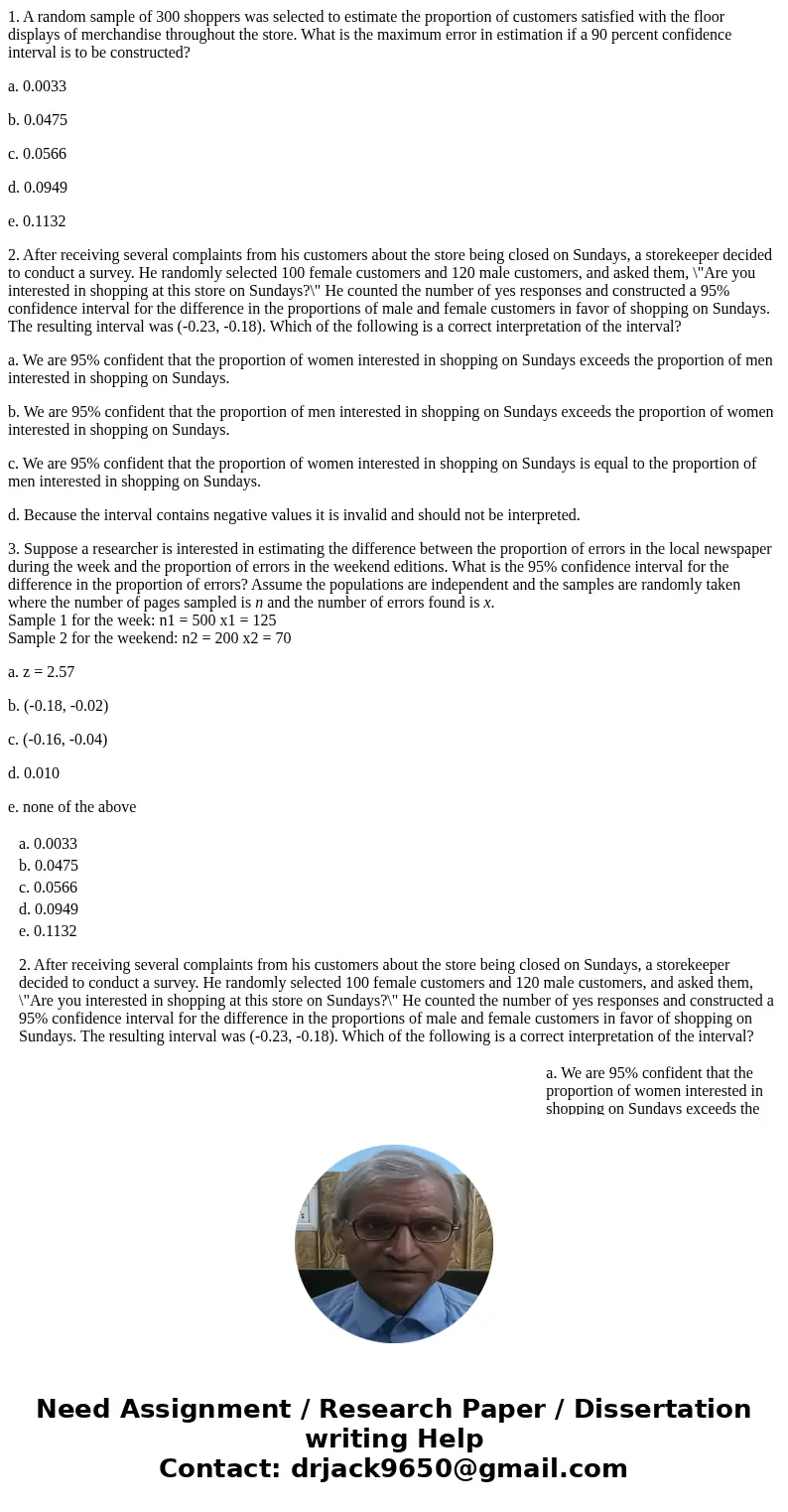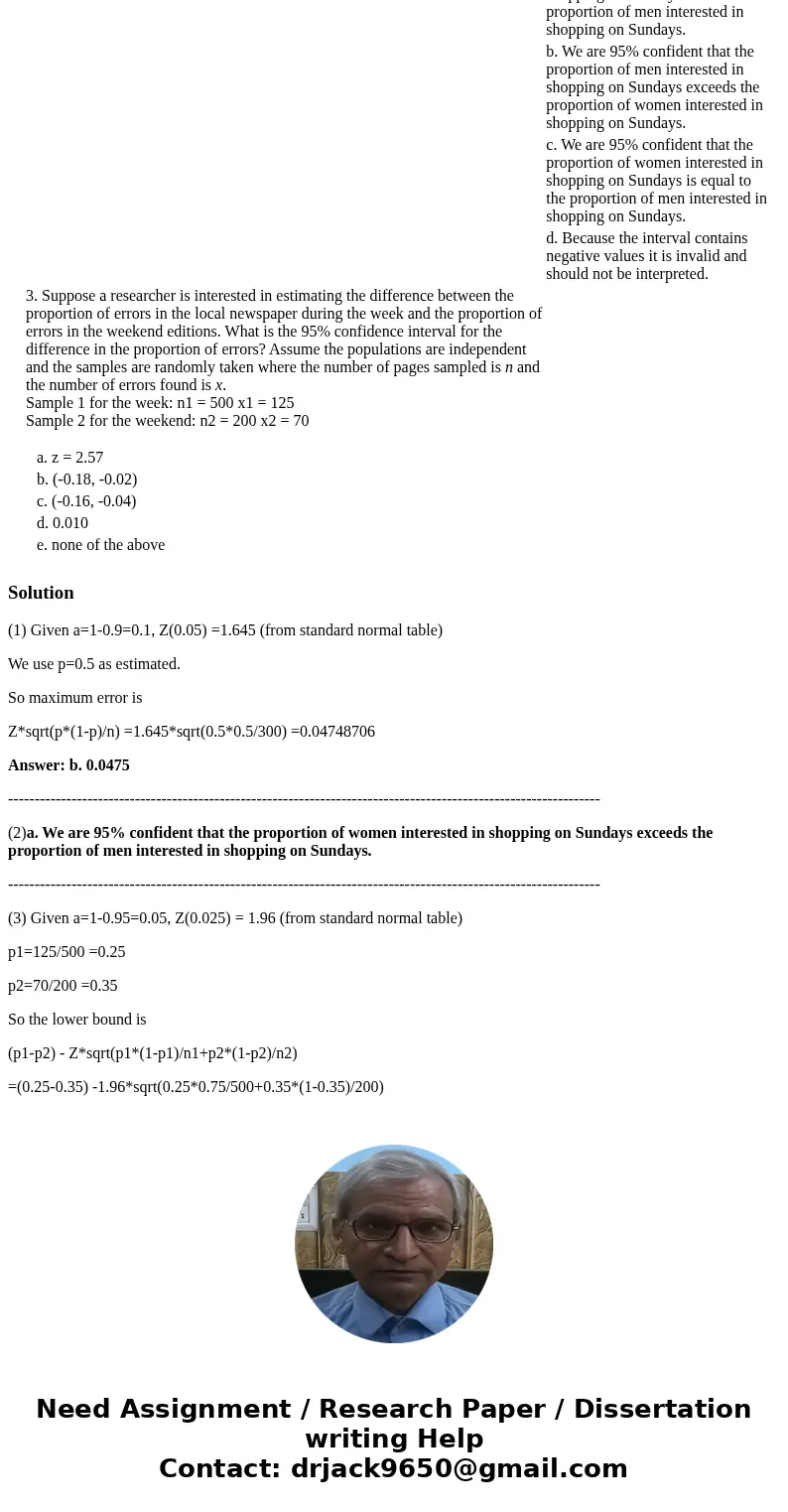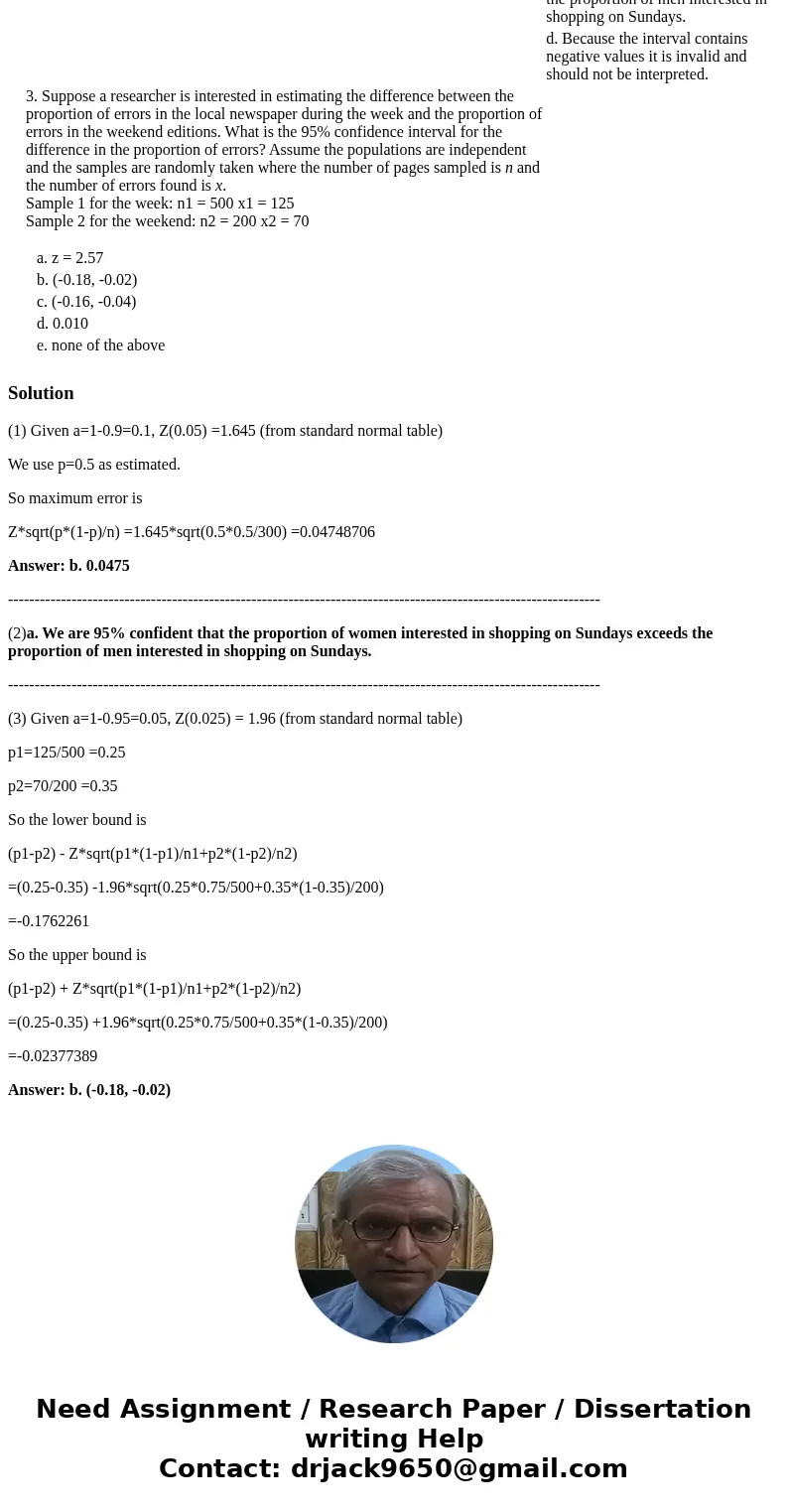1 A random sample of 300 shoppers was selected to estimate t
1. A random sample of 300 shoppers was selected to estimate the proportion of customers satisfied with the floor displays of merchandise throughout the store. What is the maximum error in estimation if a 90 percent confidence interval is to be constructed?
a. 0.0033
b. 0.0475
c. 0.0566
d. 0.0949
e. 0.1132
2. After receiving several complaints from his customers about the store being closed on Sundays, a storekeeper decided to conduct a survey. He randomly selected 100 female customers and 120 male customers, and asked them, \"Are you interested in shopping at this store on Sundays?\" He counted the number of yes responses and constructed a 95% confidence interval for the difference in the proportions of male and female customers in favor of shopping on Sundays. The resulting interval was (-0.23, -0.18). Which of the following is a correct interpretation of the interval?
a. We are 95% confident that the proportion of women interested in shopping on Sundays exceeds the proportion of men interested in shopping on Sundays.
b. We are 95% confident that the proportion of men interested in shopping on Sundays exceeds the proportion of women interested in shopping on Sundays.
c. We are 95% confident that the proportion of women interested in shopping on Sundays is equal to the proportion of men interested in shopping on Sundays.
d. Because the interval contains negative values it is invalid and should not be interpreted.
3. Suppose a researcher is interested in estimating the difference between the proportion of errors in the local newspaper during the week and the proportion of errors in the weekend editions. What is the 95% confidence interval for the difference in the proportion of errors? Assume the populations are independent and the samples are randomly taken where the number of pages sampled is n and the number of errors found is x.
Sample 1 for the week: n1 = 500 x1 = 125
Sample 2 for the weekend: n2 = 200 x2 = 70
a. z = 2.57
b. (-0.18, -0.02)
c. (-0.16, -0.04)
d. 0.010
e. none of the above
| a. 0.0033 | ||||||||||||||||||||||||||||||||
| b. 0.0475 | ||||||||||||||||||||||||||||||||
| c. 0.0566 | ||||||||||||||||||||||||||||||||
| d. 0.0949 | ||||||||||||||||||||||||||||||||
| e. 0.1132 2. After receiving several complaints from his customers about the store being closed on Sundays, a storekeeper decided to conduct a survey. He randomly selected 100 female customers and 120 male customers, and asked them, \"Are you interested in shopping at this store on Sundays?\" He counted the number of yes responses and constructed a 95% confidence interval for the difference in the proportions of male and female customers in favor of shopping on Sundays. The resulting interval was (-0.23, -0.18). Which of the following is a correct interpretation of the interval?
|
Solution
(1) Given a=1-0.9=0.1, Z(0.05) =1.645 (from standard normal table)
We use p=0.5 as estimated.
So maximum error is
Z*sqrt(p*(1-p)/n) =1.645*sqrt(0.5*0.5/300) =0.04748706
Answer: b. 0.0475
----------------------------------------------------------------------------------------------------------------
(2)a. We are 95% confident that the proportion of women interested in shopping on Sundays exceeds the proportion of men interested in shopping on Sundays.
----------------------------------------------------------------------------------------------------------------
(3) Given a=1-0.95=0.05, Z(0.025) = 1.96 (from standard normal table)
p1=125/500 =0.25
p2=70/200 =0.35
So the lower bound is
(p1-p2) - Z*sqrt(p1*(1-p1)/n1+p2*(1-p2)/n2)
=(0.25-0.35) -1.96*sqrt(0.25*0.75/500+0.35*(1-0.35)/200)
=-0.1762261
So the upper bound is
(p1-p2) + Z*sqrt(p1*(1-p1)/n1+p2*(1-p2)/n2)
=(0.25-0.35) +1.96*sqrt(0.25*0.75/500+0.35*(1-0.35)/200)
=-0.02377389
Answer: b. (-0.18, -0.02)



 Homework Sourse
Homework Sourse